Fifth Day
May 11. 2006
"The seven falls located in the cliff walls of South Cheyenne Caņon. The caņon is made up of Pikes Peak Granite, the same igneous rock that forms Pikes Peak. The granite consists of pink feldspar, smoky quarts and mica. The local granite has been dated at one billion years old. The box canyon terminates at the waterfalls which has been carved by Cheyenne Creek."
After climbing the falls we went ahead and took the Inspiration Point trail. This is a very nice, winding trail leading to the so called Inspiration Point where we were suprised with an absolutely breathtaking view of the Great Plains and Colorado Springs. The Inspiration Point is also the location of the original gravesite of Helen Hunt Jackson, who was a writer in the 18th Century.

.jpg)
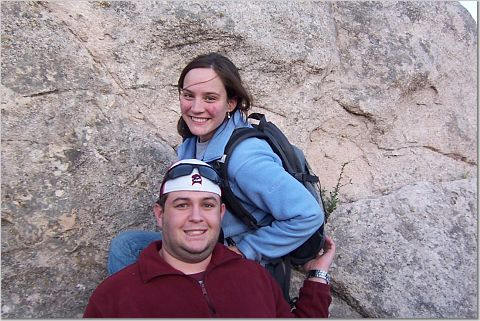
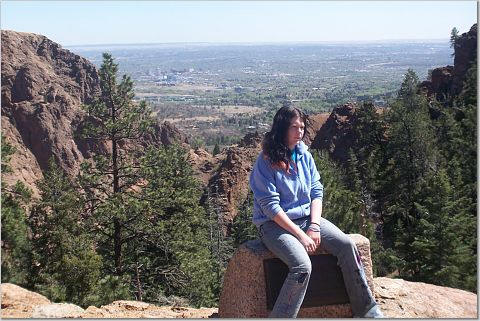
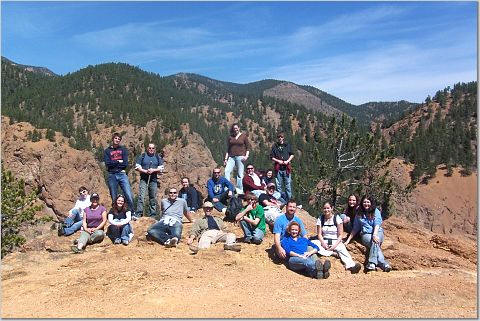
After Seven Falls we were all hungry and wanted some Mexican food. Mostly Clyde the "birthday boy". Suzan took us right to the door of a really good restaurant. After all she was a ggod help, but with some glitches.
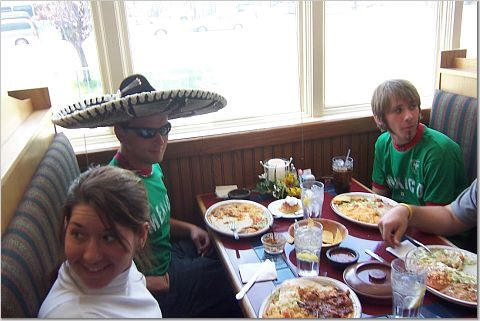
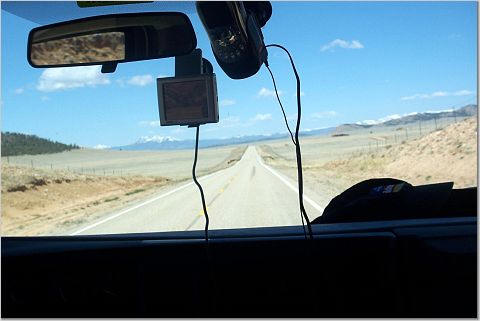
Clyde, with the hat in the Mexican restaurant Suzan (our GPS) and the XM radio.
After lunch we were heading to Pikes Peak.
"Geology of the Pikes Peak area
When it is not weathered the Pikes Peak granite appears pink due to the coloration of the orthoclase (K-feldspar) in it. The granit has the typical spheroidal weathering which shows up quite often. With exposure to moisture, mica and feldspar chemically alter and expand into clay minerals. The Pikes Peak granite extends about 1,200-square-miles in this part of Cpolorado.Granite usually forms deep down in the earth crust along subduction zones, and gets to the surface by tectonic uplift or by weathering. The Pikes Peak granite was intruded more than a billion years ago, during the Precambrian. It got to the surface by a tectonic uplift " Laramide uplift" about 70 to 40 million years ago. Then came the "Mid Tertiary Uplift". A widespread uplift affecting the whole Rocky Mt. region began about 28 million years ago, and then accelerated about 10 million years ago. In this episode, instead of major upward movement by individual blocks, the whole region gained about 5000 feet in elevation. This resulted in a new phase of stream down-cutting and erosion. This episode of regional uplift and erosion exhumed and largely created the mountains and valleys of the present day. And it, in turn, was followed by a series of glaciations that took place over the past 2 million years, which then left their imprint.
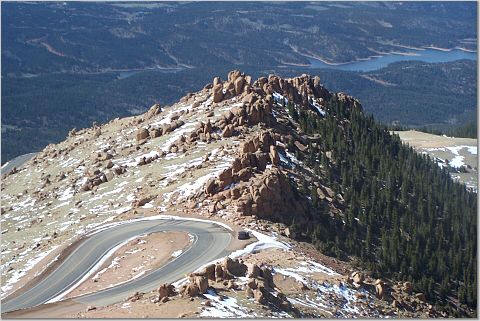

.jpg)
.jpg)
.jpg)
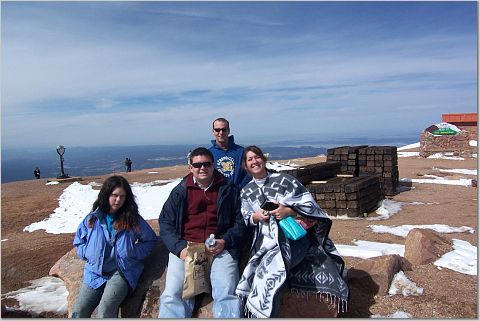
On the wa7y back to Colorado springs we stopped at a couple of interesting geology sites.
.jpg)


We got to the motel relatively early, and everybody went out to eat on their own.